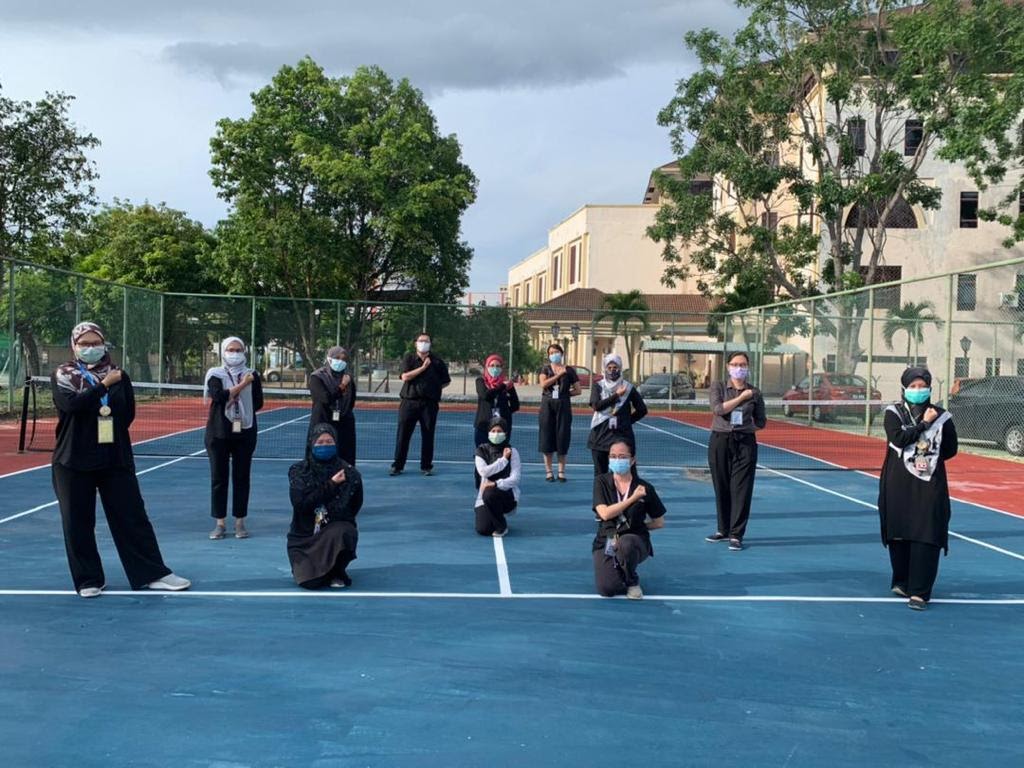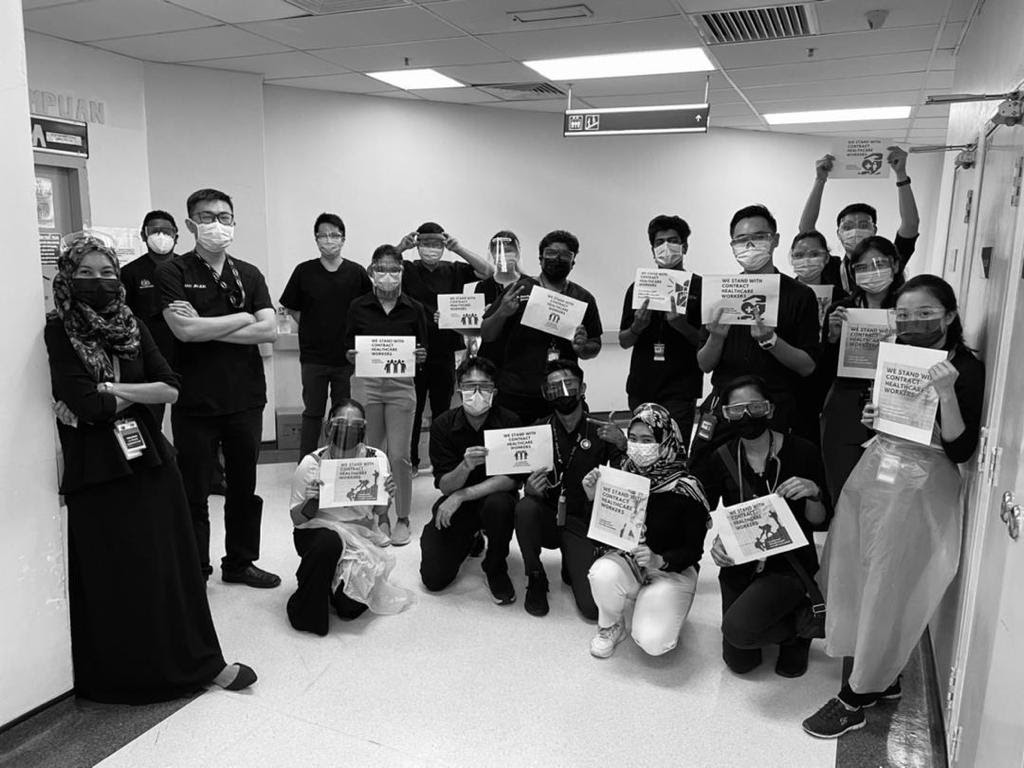The Covid-19 pandemic began early 2020 in Malaysia, and has been plaguing us for nearly two years now. Junior doctors in public service form the majority of frontline health workers battling the coronavirus pandemic.
From low-risk quarantine centres, vaccination centres to emergency departments, these doctors form a significant part of the health care service. In fact, in the integrated hospital that the Malaysia Agro Exposition Park Serdang (MAEPS) has been upgraded to, contract doctors form nearly 100 per cent of the workforce.
There has been much fuss and noise about contract doctors resigning — either leaving government service, or migrating overseas. Why is this so?
This is because since December 15, 2015, junior doctors have been employed under the contract system, and they face an uncertain future, besides receiving unfair treatment and unequal benefits.
Here are the major discrepancies and inequalities of the contract doctor system:
Employment Duration
December 15, 2021, is the five-year mark from when the announcement of the contract system was made, and there is still no clear direction or plan as to the duration of employment for contract doctors.
After the three + two years, what is to come next? Permanent doctors, as we know, are employed until their retirement at the age of 60 years.
Salary Schemes
Permanent doctors are promoted on a time-based salary scheme, starting at UD41.
Contract doctors have been offered the harmonisation of UD41 to UD43 after two years of housemanship, but there is no clear increment scheme as to what happens after that.
Flight Warrants
Among the benefits for government doctors is the flight warrant, which covers the cost of doctors returning to their hometowns (wilayah asal) with their immediate family members.
Contract doctors do not qualify for such a benefit, despite having the same job scope, responsibilities, and workloads as permanent doctors.
Hazard Leave
An extra 14 days of annual leave is granted to doctors working in conditions that expose them to higher occupational hazards, e.g. psychiatry, radiology, etc.
This leave is however not applicable to contract doctors, even though they too are exposed to the same hazards.
Postgraduate Training
The Federal Scholarship (Hadiah Latihan Persekutuan) is available for permanent doctors after successful application into a Master’s training programme for postgraduate training. This is necessary for the creation of new specialists for the country.
Despite many verbal promises, there is currently no mechanism of funding for contract doctors to successfully enter a postgraduate training programme in Malaysia.
Zero-Cost Measures
There are some zero-cost measures that can be implemented immediately:
1. Postgraduate Scholarships
Open up government funding for all doctors who are successful in their Master’s training programme application, e.g. if 1,000 training funded slots are available per year, allow all doctors (contract and permanent) to apply for them.
Call it HLP or whatever you want, but as long as the number of slots is constant, this measure will not incur any extra cost for the government. Why has this not been implemented?
Permanent doctors start postgraduate training as early as their sixth year of service. The first batch of contract doctors begin their sixth year next week. Will they qualify for training scholarships in 2022? The government must move quickly!
2. Hazard Leave And Other Benefits
Allowing contract doctors the extra 14 days of leave to compensate for increased occupational hazards will not have any monetary implication for the government.
It is grossly unfair, as this leave is only given to permanent doctors, but all doctors are equally exposed to hazards.
The implementation of this measure only requires a signed circular by those in power. Why has it not been done after five years?
3. Transparent Selection Criteria For Permanent Posts
Releasing the detailed selection criteria (if it exists) will not cost anything.
Some contract doctors have quoted examples of selection for permanent positions being delayed, despite having excellent yearly assessments; while those who are below par are absorbed earlier into permanent positions.
Having transparent and detailed ranking criteria will also enable and encourage our junior doctors to improve themselves.
4. Clear Salary Scheme And Promotion Schedule
There is no information as to what happens after the harmonisation of UD43 pay grades for doctors who have completed the two years of housemanship.
Do they progress to UD47? After how many years? What happens after that?
The extended contract system carrot has been dangled in front of our eyes through many speeches by administrators, but we have seen no concrete implementation.

Malaysia Or Migrate?
Largely due to parental influence, I have always strongly opposed the idea of migration. “Stay and serve your country” was my response to anyone who asked about working overseas.
This has changed slowly over the past year, as I see more and more leave the service (and the country) in search of a more certain and stable future.
One of the most frequently asked questions by many capable contract doctors is “I want to be a specialist, how do I proceed?” And there has been no clear answer to that question yet.
Many aspire to further their studies, and want to serve Malaysia as specialists in the future. But they, too, have given up waiting. As a junior specialist working with contract doctors, my heart aches every time someone leaves.
Calling the Consultants
This is a call to those in positions of influence, especially in academia, to step out of their comfort zones; to risk backlash; to speak out publicly against the injustice that the contract doctors have been facing.
The National Postgraduate Curricula is a systematic, comprehensive pathway that has taken years of preparation. But if the mechanism of funding has not been made clear to all, we have yet again failed our contract doctors.
As we move into 2022, we can only hope that the powers that be heed the call to action for the sake of Malaysia. The three key players — the Public Service Department (JPA), the Ministry of Finance (MOF), and the Ministry of Health (MOH) — need to promptly address these issues with concrete solutions, before it is too late.

Dr Timothy Cheng is an outspoken and zealous junior orthopaedic surgeon who loves Malaysia and believes in equal rights for all doctors.
Dr Cheng’s article is part of an exclusive series of guest essays by experts in the health care sector for CodeBlue on their reviews of Malaysia’s 2021 Covid-19 response and their outlook for 2022.








